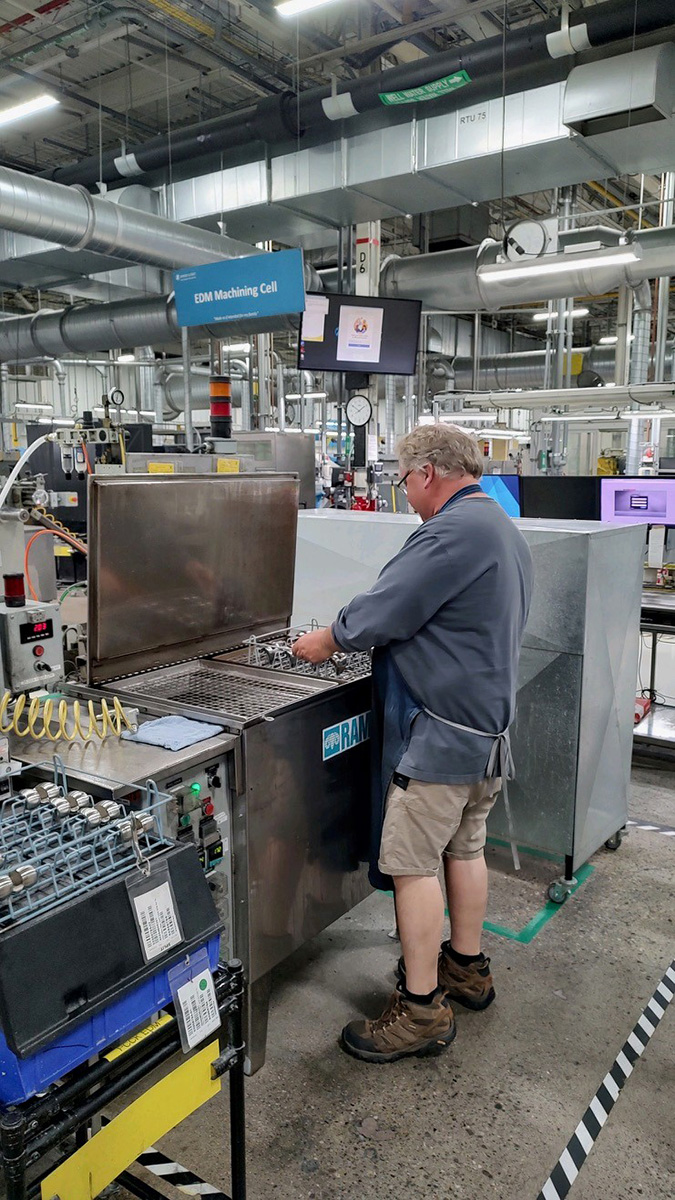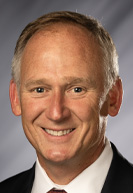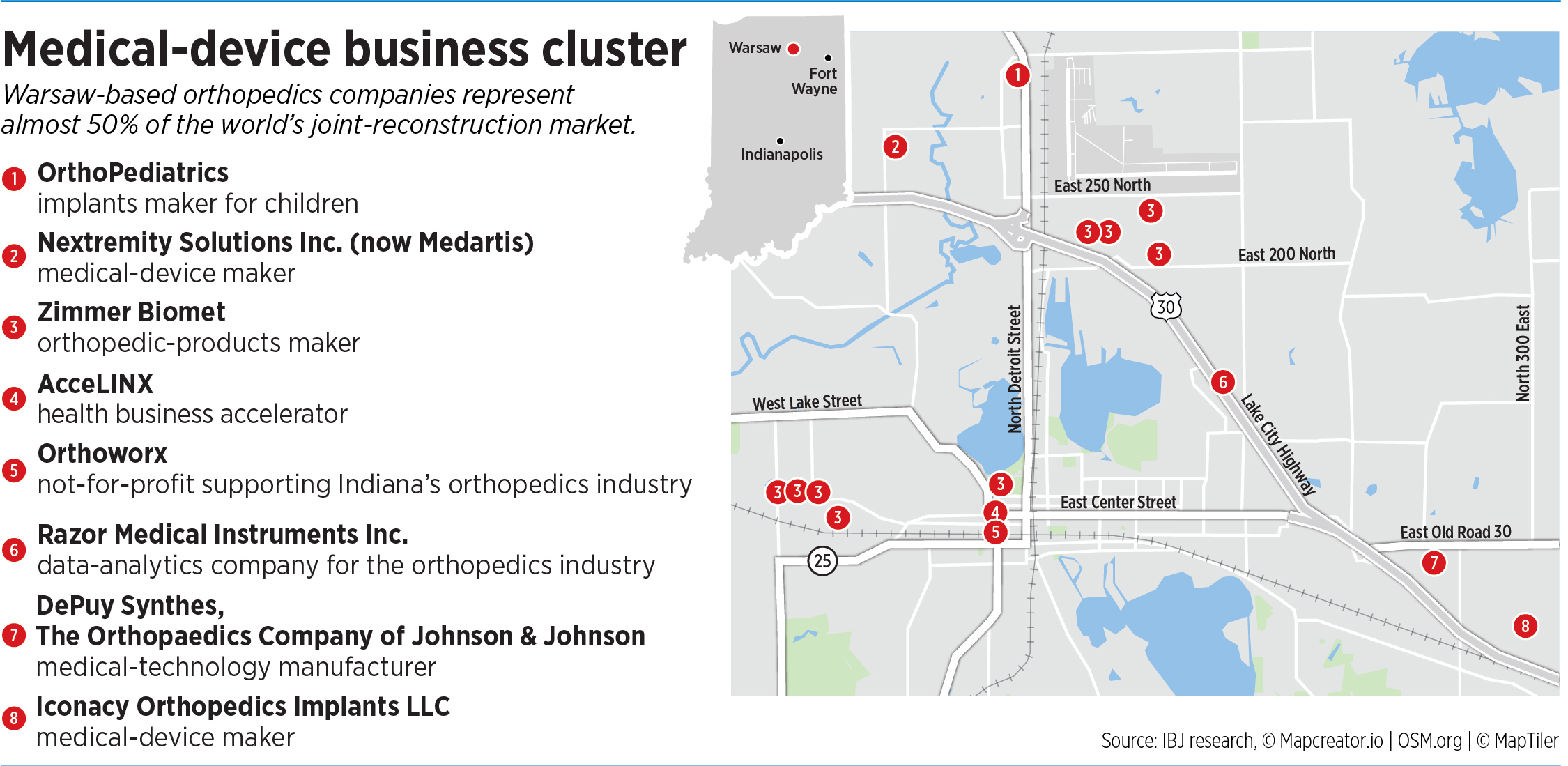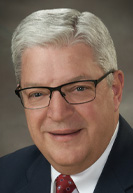Subscriber Benefit
As a subscriber you can listen to articles at work, in the car, or while you work out. Subscribe NowWarsaw is a small, picturesque city known for scenic lakes, well-regarded schools and an orthopedics industry whose global significance has an outsized influence on the local economy.
So when Minneapolis-based Medtronic announced plans in 2021 to shutter its operations in the northern Indiana city, state Rep. Craig Snow took it as a warning sign to take action. His response is expected to pay off next year when $30 million in state funds would be available to launch an initiative to retain such employers.
Months before Medtronic’s decision, Snow had met with Gov. Eric Holcomb and Secretary of Commerce Brad Chambers only months earlier to ask if they would consider making a larger economic investment in House District 22—which includes portions of Kosciusko and Wabash counties—to encourage orthopedics companies to stay in Indiana.
It was too late—at least for Medtronic. But Snow was determined to prevent another company from leaving the region.
“You know the old adage, ‘Never let a good crisis go to waste,’” Snow said. “I called the governor and Brad Chambers back and said, ‘Hey, this is my concern. This is exactly what I was talking about.’”

Medtronic’s decision to abandon its Indiana plant by 2025, while disruptive for the company’s 200 workers and their families, helped open a dialogue between state lawmakers and local stakeholders in Kosciusko County.
Warsaw leaders also expressed concern that many corporate executives for their two largest orthopedics employers—Zimmer Biomet and DePuy Synthes—no longer live in the Warsaw area as they did several years ago.
“The reality is that the person putting their name on the payroll line and making the decisions doesn’t live here,” Snow said. “They could make a decision, like any other business owner can, on, ‘Where do we make our next investment?’ And it may not be in Indiana. It may not be in Warsaw.”
Snow worked with the Governor’s Office, Senate Appropriations Chair Ryan Mishler and House Ways and Means Committee Chair Jeff Thompson to earmark $30 million in the 2023-2025 budget for an orthopedics-retention initiative.
“I felt we needed to do something to show them that we were serious about doing what we could to keep [orthopedic companies] here,” Mishler told IBJ. “We work so hard at getting new companies to come in—and we’ve done a very good job of that—but when you have such a large industry, you want to make sure you keep them as well.”
Lawmakers also included an additional $30 million for the Northeast Indiana Strategic Development Commission to strengthen 11 counties in the region, including Kosciusko County, through hiring incentives, investments in K-12 education and supportive housing.
Both budget line items need final approval from the State Budget Committee, which is expected to hold its final hearing of the 2022 fiscal year later this month. The money would then become available on July 1, 2024.
Once approved, the funding for the orthopedics-retention initiative would go to Orthoworx, a Warsaw-based not-for-profit established in 2009 with a $7 million Lilly Endowment grant to support the orthopedics industry. Its board is made up of company executives, industry professionals, education advocates and local officials.
Orthoworx says it plans to use the funds to improve access to child care and housing and to create new amenities to grow the next generation of the workforce.
“These amenities that we talk about are trying to create new experiences,” Orthoworx CEO Bob Vitoux said. “We know this generation enjoys experiences, and so we’re thinking about what that means as it relates to our community.”
Kosciusko County had an unemployment rate of 2.5% in 2022, lower than the statewide average of 3%, according to U.S. Census data. Its population grew rapidly between 1970 and 2000, from 48,000 residents to 74,000, though its growth rate has since slowed. The county has added only 6,000 residents in the past 20 years.
Given the global footprint companies like Zimmer Biomet and DePuy Synthes occupy, along with a marked increase in remote work since the pandemic, Vitoux knows that luring company executives to a small Indiana city is a tall order—which is why the organization wants to use state funding to improve quality-of-place amenities.
“We want to be as realistic as we can,” he said. “What we want to do with this money is make our community as attractive as we can make it for those that want to be a part of it.”
Zimmer Biomet, a Fortune 500 company with 18,000 employees worldwide, is the top employer in the county with 5,000 local workers, according to the Kosciusko Economic Development Corp.
“With such a significant presence in Indiana, it’s vitally important for us to support efforts that help attract and retain talent for the area and the orthopedics industry,” Lori Winkler, senior vice president at Zimmer Biomet, told IBJ in written remarks. “Several senior leaders from Zimmer Biomet have worked with state officials over the past several years to support efforts on this front, and we’re grateful they have elected to designate these funds for talent attraction and industry retention.”
Warsaw owes its status as a musculoskeletal hotbed to Revra DePuy, a traveling salesman from Illinois who founded DePuy Manufacturing in Warsaw in 1895.
Depuy came up with the simple but revolutionary concept of using metal instead of wood to craft splints. His discovery forever changed the orthopedics industry and would cement Warsaw’s reputation as the orthopedic capital of the world.
He was granted a patent for the fiber splint in 1901 and four years later founded DePuy Manufacturing, which later became part of Johnson & Johnson and is now known as DePuy Synthes.
In 1905, a man named Justin Zimmer began working for DePuy as its first sales representative. Zimmer later left the company and founded Zimmer Holdings, which eventually became Zimmer Biomet.
Today, orthopedics companies in the Warsaw area represent nearly half of the global orthopedics market, according to Orthoworx, making the city’s medical-device business cluster the most concentrated in the world.
The industry’s success has had ripple effects throughout the local economy. Warsaw is a hot attraction for water recreation, and the town boasts an art gallery, a center for the arts, a summer concert series and Himalayan salt caves.
“For a great number of our families, their livelihood depends on orthopedics,” Vitoux said. “Some of them are directly associated with implants, and many of them are tier two, tier three suppliers in the industry.”
Warsaw Mayor Joseph Thallemer, who was first elected in 2011 and is finishing his third and final term this year, said Kosciusko County’s steady population growth since the turn of the 20th century can be attributed to the orthopedics industry.
“As the industry grows, so does the growth and success of our community,” Thallemer said.
The demand for orthopedic products and procedures continues to grow, and Warsaw hopes to benefit.
By 2030, the projected number of primary hip and knee replacements per year in the United States will reach 4.5 million, according to Orthoworx. Last year, there were 2.8 million hip and knee procedures, according to the American Joint Replacement Registry.
City leaders also hope to continue to draw employees such as Mallory Trusty.
Before joining the orthopedics industry, Trusty had never heard of Warsaw. An Indianapolis native, she came to the orthopedics hub after finishing graduate school at the Purdue University Daniels School of Business.
She worked in human resources at Zimmer Biomet for four years before joining OrthoPediatrics, a Warsaw-based publicly traded company making orthopedic products for children.
She now thinks of Warsaw as a well-kept secret.
“If you work in orthopedics, it really is the place to be,” Trusty said.•
Please enable JavaScript to view this content.







I wonder if other communities in our state will get comparable treatment. For example communities impacted by the auto industry.